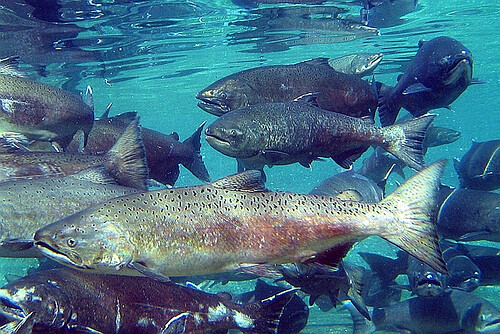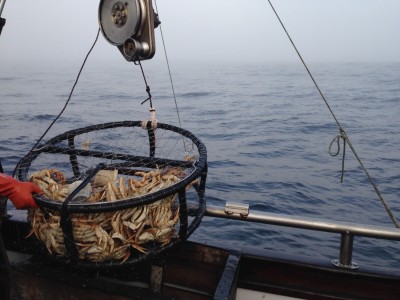California’s Chinook salmon population continues to decline, prompting concerns over a possible third consecutive closure of the state’s commercial and recreational salmon fishing season.
In April, the Pacific Fishery Management Council will decide whether to impose a limited fishing season or enforce a complete shutdown to facilitate stock recovery.
Recent estimates from the California Department of Fish and Wildlife indicate approximately 166,000 Sacramento River fall-run Chinook salmon currently in the ocean, a decrease from the preseason estimate of 214,000 last year and comparable to the 2023 estimate of 169,000. These numbers reflect a significant drop from the robust salmon population observed in California’s river over a decade ago.
The fishing industry has been severely affected by these declines. The typical fishing season, spanning from May to October, traditionally supports around 460 commercial vessels. However, due to the downturn, many fishermen have sought alternative employment or listed their boats for sale. George Jue, a commercial fisherman based at Pillar Point Harbor in Half Moon Bay, told the Los Angeles Times that numerous colleagues have resorted to land-based jobs as the fishery has deteriorated.
Several factors have contributed to dwindling salmon numbers, including severe droughts from 2020 to 2022, which reduced river flows and elevated water temperatures detrimental to salmon eggs. Water management practices during these periods have been criticized for prioritizing agricultural needs over ecological requirements, further exacerbating the decline. Environmental advocates argue that excessive water allocations to farms and urban areas have deprived rivers of the cold flows essential for salmon survival.
The potential for a third consecutive fishing season closure looms, making an unprecedented event in the state’s history. State biologists attribute the decline to a combination of factors, including dam constructions that have obstructed spawning areas and the impacts of climate change, which has intensified droughts and increased river temperatures.
The Newsom administration has initiated efforts to aid salmon population recovery in response to these challenges. The measures encompass restoring tidal habitats, modernizing infrastructure, removing migration barriers, and reintroducing salmon to traditional spawning areas upstream of dams. According to the Associated Press, following the removal of dams on the Klamath River near the California-Oregon border last year, biologists have observed salmon spawning in upstream waters that have been inaccessible for over a century.
The uncertainty surrounding the upcoming season has left many in the industry anxious about their livelihoods and the future of California’s salmon fisheries. As the Pacific Fishery Management Council deliberates on the 2025 season, stakeholders are bracing for decisions that will significantly impact the state’s fishing communities and the preservation of its salmon populations.







